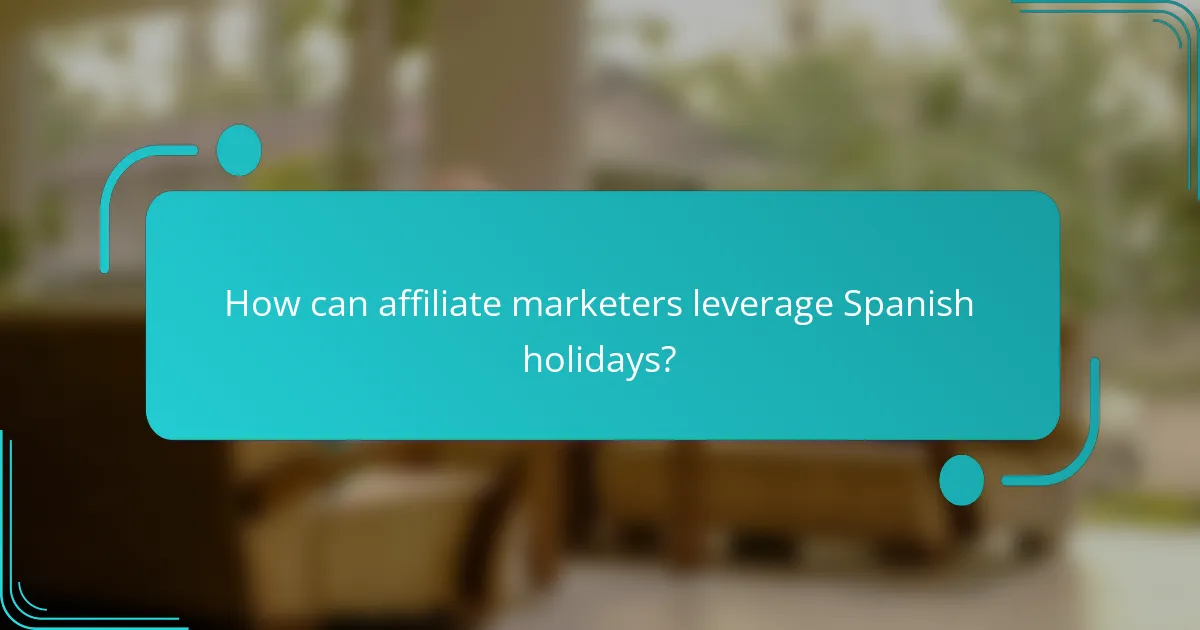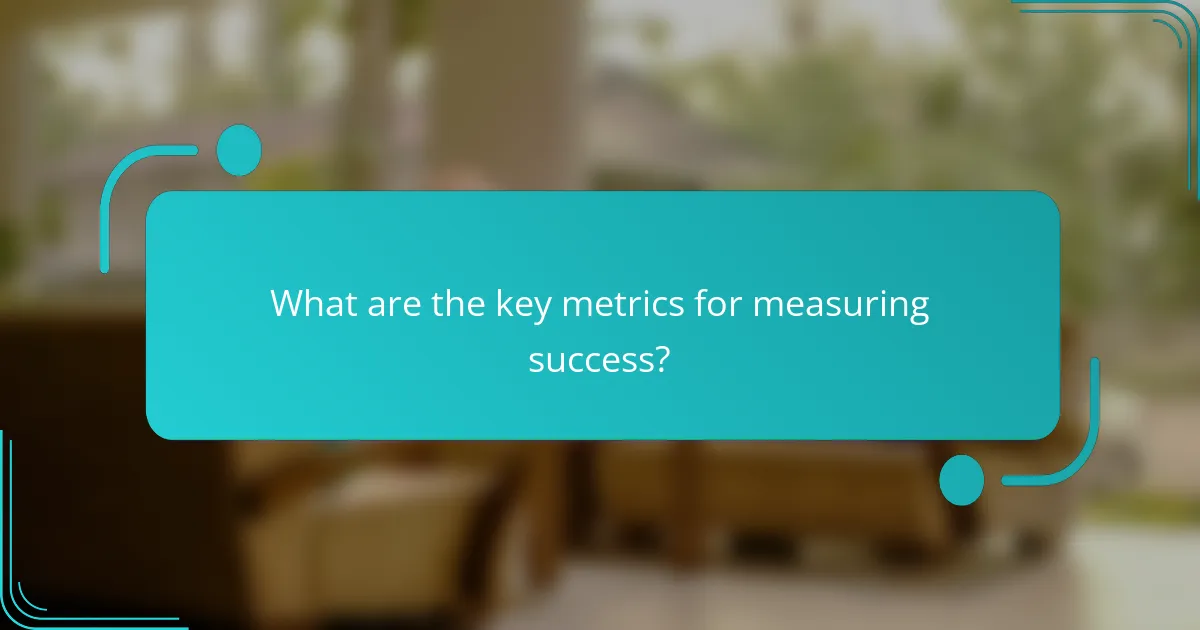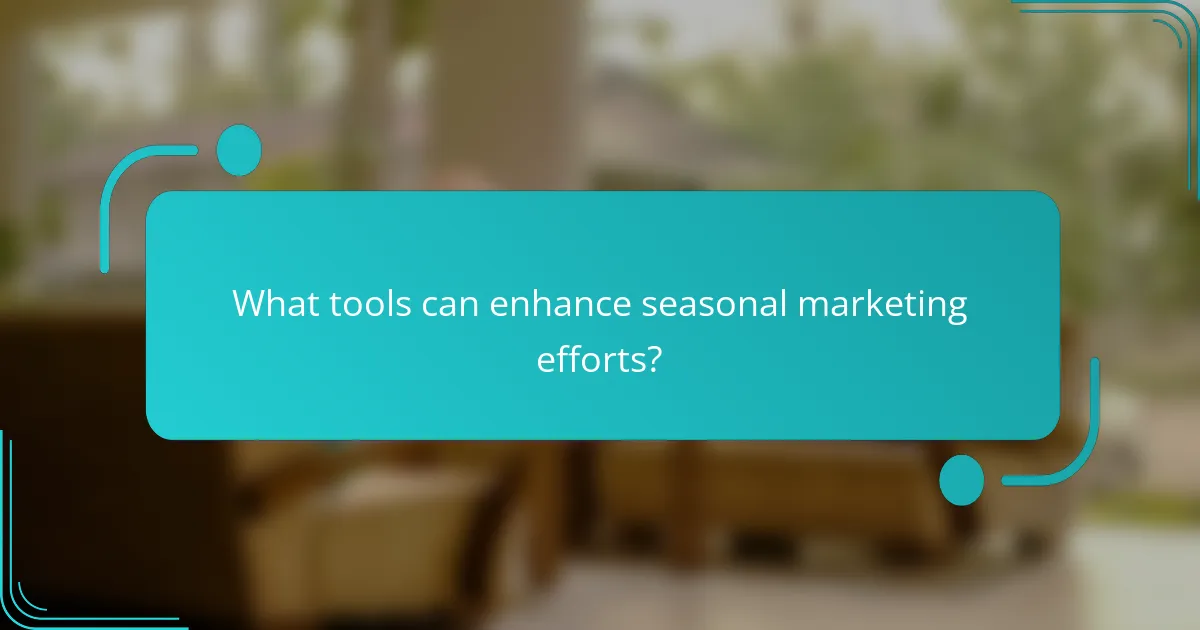Seasonal marketing tactics tailored for the Spanish market can significantly enhance conversion rates by tapping into cultural relevance and consumer behavior. Strategies such as localized email campaigns, social media promotions, and influencer partnerships, combined with seasonal discounts, create a compelling approach to engage audiences during peak shopping periods. By aligning promotional efforts with local holidays and traditions, marketers can foster deeper connections and drive sales effectively.

What seasonal marketing tactics drive conversion rates in Spain?
Seasonal marketing tactics that effectively drive conversion rates in Spain include localized email campaigns, social media promotions, influencer partnerships, seasonal discounts, and content marketing aligned with holidays. These strategies leverage cultural relevance and consumer behavior to enhance engagement and boost sales during peak seasons.
Localized email campaigns
Localized email campaigns are tailored to resonate with Spanish consumers by incorporating regional language, cultural references, and local events. Personalizing content based on customer preferences can significantly increase open and click-through rates.
Consider segmenting your email list by demographics or past purchase behavior to send targeted messages. For example, promoting summer sales in coastal areas can drive higher engagement compared to generic offers.
Social media promotions
Social media promotions capitalize on platforms popular in Spain, such as Instagram and Facebook, to reach a broad audience. Engaging visuals and culturally relevant content can attract attention and encourage shares, enhancing organic reach.
Utilize seasonal hashtags and run contests or giveaways to stimulate interaction. For instance, a campaign during La Tomatina could feature themed products, encouraging users to share their experiences for a chance to win discounts.
Influencer partnerships
Influencer partnerships can amplify your brand’s reach by leveraging the trust and authenticity influencers have with their followers. Collaborating with local influencers who align with your brand values can enhance credibility and drive conversions.
Choose influencers who resonate with your target demographic and have a genuine connection to the product. For example, partnering with a food blogger during the holiday season can promote festive recipes featuring your products.
Seasonal discounts and offers
Seasonal discounts and offers are effective in enticing consumers during key shopping periods, such as Black Friday or Christmas. Limited-time promotions create urgency, encouraging quicker purchasing decisions.
Consider offering tiered discounts based on spending thresholds to increase average order value. For example, a 10% discount on purchases over €50 can motivate customers to buy more to reach the discount level.
Content marketing aligned with holidays
Content marketing aligned with holidays involves creating relevant blog posts, videos, or social media content that resonates with seasonal themes. This approach can enhance brand visibility and engagement while providing value to consumers.
Develop content that reflects local traditions and celebrations, such as recipes for traditional Spanish dishes during Christmas. This not only attracts traffic but also positions your brand as a knowledgeable resource in the market.

How can affiliate marketers leverage Spanish holidays?
Affiliate marketers can effectively leverage Spanish holidays by aligning their promotional strategies with cultural traditions and consumer behavior during these periods. Understanding the significance of each holiday allows marketers to create targeted campaigns that resonate with the audience and drive conversions.
Targeted campaigns for Christmas
Christmas is a peak shopping season in Spain, with many consumers looking for gifts and festive deals. Marketers should focus on creating campaigns that highlight popular gifts, festive discounts, and special offers tailored to the holiday spirit.
Consider using email marketing to reach out to customers with personalized gift suggestions and exclusive deals. Collaborating with local influencers can also enhance visibility and credibility during this competitive season.
Promotions for Semana Santa
Sema Santa, or Holy Week, is a significant religious celebration in Spain, marked by processions and cultural events. Affiliate marketers can capitalize on this holiday by promoting travel packages, local experiences, and products related to the festivities.
Creating content that highlights the unique aspects of Semana Santa, such as traditional foods or local crafts, can attract attention. Offering discounts on relevant products or services during this time can also encourage purchases from both locals and tourists.
Valentine’s Day marketing strategies
Valentine’s Day is increasingly popular in Spain, with couples looking to celebrate their love through gifts and experiences. Marketers should focus on romantic gift ideas, dining experiences, and personalized products that appeal to this audience.
Utilizing social media campaigns that encourage sharing love stories or photos can enhance engagement. Additionally, offering limited-time promotions or bundles can create urgency and drive sales during this holiday.

What are the key metrics for measuring success?
Key metrics for measuring success in seasonal marketing tactics include conversion rates, customer engagement metrics, and return on investment (ROI). These metrics provide insights into how effectively marketing strategies are driving sales and customer interactions.
Conversion rate analysis
Conversion rate analysis focuses on the percentage of visitors who complete a desired action, such as making a purchase. For seasonal campaigns, tracking conversion rates can reveal which promotions resonate most with your audience. A typical conversion rate for e-commerce sites ranges from 1% to 5%, but seasonal spikes can push this higher.
To analyze conversion rates effectively, segment your data by traffic source, campaign type, and customer demographics. This helps identify which channels are most effective during specific seasons, allowing for targeted adjustments in strategy.
Customer engagement metrics
Customer engagement metrics measure how actively customers interact with your brand during seasonal campaigns. Key indicators include time spent on site, pages per visit, and social media interactions. High engagement often correlates with increased conversion rates, making it essential to monitor these metrics closely.
Utilize tools like Google Analytics to track user behavior and engagement levels. Consider setting benchmarks based on previous seasonal campaigns to evaluate performance and make necessary adjustments in real-time.
Return on investment (ROI)
Return on investment (ROI) assesses the profitability of your seasonal marketing efforts by comparing the revenue generated against the costs incurred. A positive ROI indicates that your marketing strategies are effective, while a negative ROI signals the need for reevaluation. Aim for an ROI of at least 300% for successful campaigns.
To calculate ROI, use the formula: (Net Profit / Cost of Investment) x 100. Regularly review your ROI to determine which tactics yield the best results and allocate resources accordingly for future campaigns.

What tools can enhance seasonal marketing efforts?
Several tools can significantly boost your seasonal marketing efforts by providing insights, automating tasks, and improving engagement. Utilizing the right tools can streamline your processes and enhance your conversion rates during peak seasons.
Google Analytics for tracking
Google Analytics is essential for tracking user behavior and measuring the effectiveness of your seasonal marketing campaigns. It allows you to analyze traffic sources, user demographics, and conversion rates, helping you identify what works and what doesn’t.
To make the most of Google Analytics, set up specific goals related to your seasonal campaigns. For example, track the number of purchases made during a holiday promotion or the engagement rate of a seasonal landing page. Regularly review these metrics to adjust your strategies in real-time.
Mailchimp for email campaigns
Mailchimp is a powerful tool for managing email marketing campaigns, especially during seasonal events. It enables you to create targeted email lists, design visually appealing emails, and automate your outreach efforts to maximize engagement.
Consider segmenting your audience based on previous purchases or engagement levels to tailor your messages effectively. For instance, send exclusive offers to loyal customers during the holiday season to encourage repeat purchases. Monitor open and click rates to refine your approach continuously.
Hootsuite for social media management
Hootsuite simplifies social media management by allowing you to schedule posts, track engagement, and analyze performance across multiple platforms. This is particularly useful during busy seasonal periods when timely and consistent posting is crucial.
Utilize Hootsuite to plan your content calendar ahead of major holidays or events. Create themed posts that resonate with your audience and engage them with interactive content like polls or contests. Regularly check analytics to see which posts perform best and adjust your strategy accordingly.

What are the prerequisites for effective seasonal marketing?
Effective seasonal marketing requires a deep understanding of your target audience and well-defined marketing goals. These prerequisites ensure that your campaigns resonate with consumers and drive conversions during peak seasons.
Understanding target audience behavior
To tailor your seasonal marketing efforts, analyze the behaviors and preferences of your target audience. Consider factors such as demographics, purchasing habits, and seasonal trends that influence their buying decisions.
Utilize tools like surveys, social media insights, and website analytics to gather data. For instance, if your audience shows a preference for discounts during holidays, emphasize promotional offers in your campaigns.
Setting clear marketing goals
Establishing clear marketing goals is crucial for measuring the success of your seasonal campaigns. Goals should be specific, measurable, achievable, relevant, and time-bound (SMART) to guide your strategy effectively.
For example, aim to increase conversion rates by a certain percentage or boost sales during a specific holiday period. Regularly review these goals and adjust your tactics based on performance metrics to optimize your approach.

How to create a seasonal marketing calendar?
Creating a seasonal marketing calendar involves planning your marketing efforts around key seasonal events and trends that resonate with your target audience. This structured approach helps optimize campaigns for maximum engagement and conversion rates.
Identify key dates and events
Start by researching significant holidays, cultural events, and seasonal trends relevant to your audience in Spain. Key dates like Christmas, Easter, and local festivals can drive consumer behavior and influence purchasing decisions.
Consider creating a list of these dates along with associated themes or products. For instance, you might promote gift items during Christmas or special offers for summer vacations. This helps in aligning your marketing strategies with consumer expectations.
Utilize online tools and resources to track these events, and ensure to update your calendar annually. This proactive approach allows you to capitalize on emerging trends and adjust your strategies accordingly.
